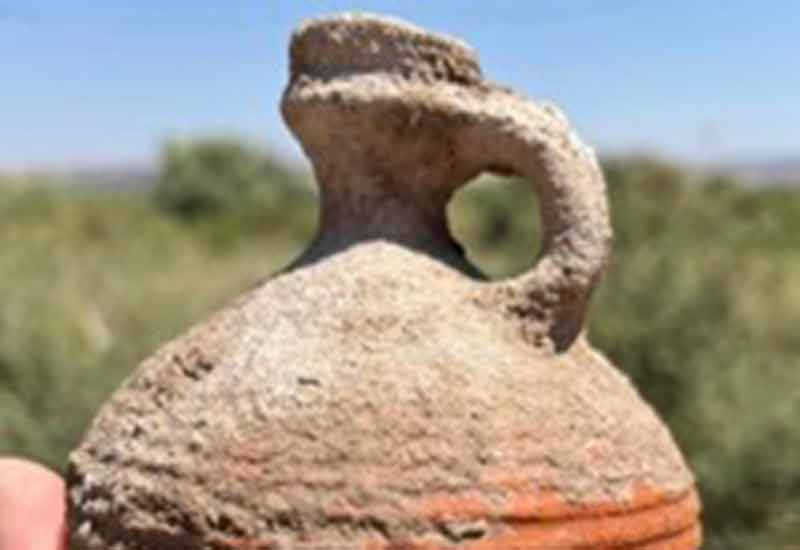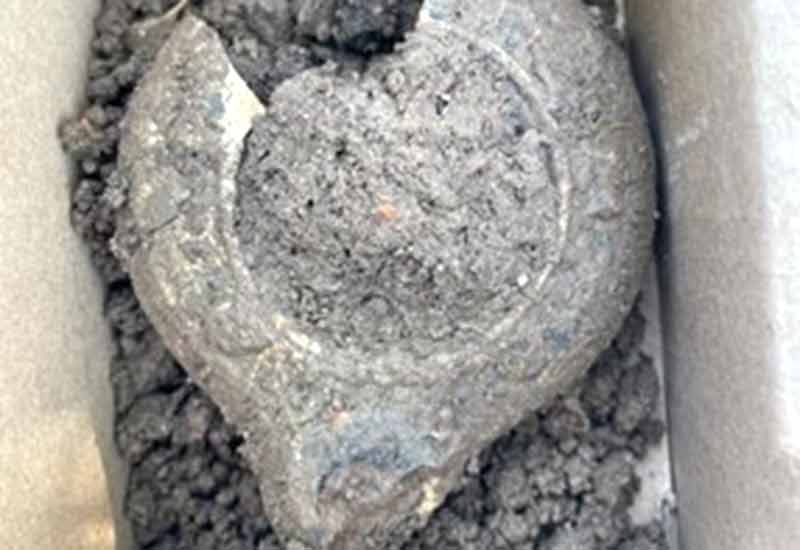Digging Deep in the Scripture: Discovering Bethsaida

Dr. Carrie Wood, who serves as an assistant professor of Biblical Studies for the Regent University School of Divinity, is discovering new depths in her walk with the Lord.
In 2022, an assignment took Wood to lands many have only read about in scripture.
Her journey is one that brought her to her knees in prayer and positioned her on her knees—digging through layers of dirt for truth.
In the throes of heat, thirst, and obedience, Dr. Wood and the full excavation team found what they were looking for—what’s believed to be the lost biblical City of Bethsaida.
“…seek and keep on seeking and you will find; knock and keep on knocking and the door will be opened to you.” – Matthew 7:7
Dr. Wood traces her journey of discovery back to the close of her Master of Divinity program at Regent.
“At my hooding ceremony for my MDIV, Dr. Mark Cartledge, a School of Divinity professor, spoke these words over me, ‘The ancient of days have called you to walk the ancient paths,’ — then he just walked away,” recalled Wood. “I was like, ‘Who was that?’ I hadn’t been his student, but one week later—I was in Israel.”
When Wood wrapped up her first trip to Israel, she made sure to get her passport stamped because she had no intentions of returning. However, God had other plans and has called her back to Israel many times.
“Standing in Israel is one of the most profound experiences of my life,” Wood reflected. “It is still the best place on earth for me to be—outside of being with my husband.”
Fortunately, Wood and her husband, a Navy chaplain, were side-by-side on her most recent and rewarding excavation project.
As a biblical scholar on previous expeditions, Wood felt that the locations she’d visited in the Holy Land just weren’t the place where the ancient fishing village of Bethsaida once stood because they were too far away from Lake Kinneret or the Sea of Galilee.
But this time, things were different. The chosen excavation site was on the north-eastern shore of the Sea of Galilee and that felt right.
“When you step foot inside the land you have to ask yourself does this fit the biblical narrative,” declared Wood. “Knowing the geography of the land brings the text to life.”
Just as a reminder: Ancient Bethsaida has great significance as the city where apostles Peter and Andrew had a home, where Jesus fed 5,000 with five loaves of bread and two fish and where He restored the sight of a blindman.
The excavation team Wood’s joined at El-Araj was led by archaeologists from Kinneret College in Israel and Nyack College in New York and included volunteers from the USA, Canada, China, Slovakia, Brazil, and the UK – all eager to find good markers from this ancient fishing village that grew into a thriving Roman City.

Once the dig began, the excavation team was broken into small groups and assigned to a five-by-five-meter square to focus their efforts.
“We got up at 4:00 am, had breakfast by 4:30 am and were on site as the sun was thinking about coming out and it was already hot and humid,” Wood chuckled. “Within 15 minutes of digging we were soaked.”
The terrain was so challenging that the groups were offered a second breakfast at 9:00 am to keep them fueled and hydrated. The digging ended each day around noon.
“Once the day of digging stopped, you could swim in the Sea of Galilee or watch kayaks go by,” Wood reflected. “Green parakeets were flying overhead. The trees…the foliage—it was just so pretty.”
Wood worked the site, called Area D, for about a week, but it didn’t take long for the team at her square to make a discovery. The group unearthed a bona fide artifact from the Roman period within the first foot of digging.
“You record everything that you find within your square and it’s important to record the depth level, as well,” Wood explained. “Pieces, fragments, and coins—which are amazing because they have dates on them. When you find a coin a holler of excitement goes out across the site.”

Volunteers from China made the most significant discovery when they unearthed a mosaic inscription from within what appears to be the Basilica.
It’s documented that Willibald Eichstätt, an eighth century bishop, spoke about his trip to the Holy Land and mentioned a Basilica that was built over the home of apostles Peter and Andrew.
At present, the Israel Antiquities Authority has control of all that was found during this fruitful expedition. A report will be filed that includes a catalog of all the pieces that were discovered.
Dr. Wood affirms that archaeology is important to biblical studies because it seats us in the land and time of the text. “I love to introduce Jesus to people in His time and space. We often introduce scripture to people from the perspective of now, but this takes us to when Jesus decided to come and sit with us.”
They (Peter and Andrew) were casting a net into the lake, for they were fishermen. “Come, follow me,” Jesus said, “and I will send you out to fish for people.” – Matthew 4:18-19
Dr. Wood calls herself a “fan girl” of the book of Matthew chapter four. However, after experiencing real life discovery, reading scripture inspires the same feeling of awakening in her that she gets when the lights begin to come up in a theater.
“These discoveries have brought passion and excitement to my reading and teaching,” Wood explains. “It’s like going back to where our family–the Christian family first originated. It connects us to the first believers.”
Dr. Wood wakes up each morning asking God, “What is our adventure for today?”
She is able to do that because she lives obedient to His will and trusts Him completely in determining what’s next.
She offered these closing words of wisdom to all who are on the path of discovery in Christ Jesus, “We may dig at archaeological sites, but we as Christians really need to dig through scripture. That is where you will find what God has for YOU.”








